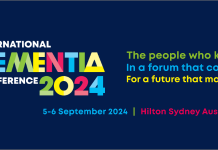In this guest post Civica Care MD Craig Porte offer his views on the year ahead and how cloud-based infrastucture can unpderpin the adoption of client-centred care.
The federal government’s budget announcement of $1.6 billion for 23,000 additional home care packages to help care for older Australians in their own home is an important step that recognises the urgency of providing support to the thousands of elderly Australians who want to receive care from their home.
However, complex and manual processes have often meant elderly applicants have to wait anywhere from six months to a year to access the funding.
Going into 2021, investment in cloud-based technologies for business to government (B2G) will be required to drive greater efficiencies in processing times, as well as how the government allocates its funding, to ensure care is reaching those who need it in a timely way.
By using cloud-based technologies and allowing B2G, the aged care sector will have access to accurate and up to date information – enabling them to streamline existing processes at a lower cost. The use of self-service and digital engagement tools will also improve client-centred care, giving elderly Australians more control over the care they receive.
In the community care and disability sector, cloud technologies and B2G will enable fast and accurate information anywhere and at any time. Currently, we face a situation in which outdated IT systems and poor integration of service providers in the National Disability Insurance Scheme has led to long wait times for many vulnerable clients.
With improved use of cloud technology and B2G, it will help to get more from each care dollar, improve resource optimisation and allow for better engagement through customer portal interfaces which support self-management – a key element of client-centred care.
The protraction of digital developments poses the greatest risk
The biggest risk facing the aged-care and disability sectors is the fact that the implementation of digital technology takes too long, leaving providers to operate using manual and complex processes. This often creates long-wait times for vulnerable applicants who require immediate support. It will be essential to accelerate the time in which digital technologies are implemented so that providers can streamline workflows and have improved visibility over funds.
Untapped opportunities for 2021
In 2021, the Disability Royal Commission should expand their inquiry, moving from the issue of human rights and how providers can deliver high-quality, equitable and sustainable services, to how home care providers can more efficiently address the needs and concerns of its care recipients by gaining access to accurate and timely information from the National Disability Insurance Agency (NDIA) including consumer details such as contacts and notes, assessments, financial package balances, and other information held by the NDIA that can enhance the customer experience.
In the aged-care sector, there should be a greater focus on shifting awareness and funds to home care support and packages. A significant portion of funding is still allocated towards institutional care; however, we can expect a greater number of aged-care recipients to select care from their homes. Better and quicker allocation of funds will be required to support those vulnerable people in our community.










